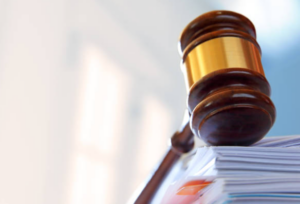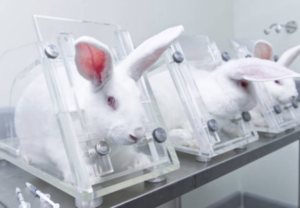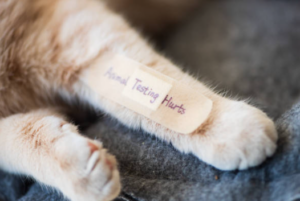Global Standards, Local Impact

In recent years, the beauty industry has witnessed a significant shift towards ethical and cruelty-free practices. Consumers are becoming increasingly conscious of the products they use, demanding transparency and humane treatment of animals. This growing awareness has prompted governments worldwide to enact and strengthen legislation to regulate the beauty industry’s ethical practices. In this blog post, we will delve into the current state of legislation surrounding cruelty-free beauty and explore emerging trends that are shaping the future of the industry.
The concept of cruelty-free beauty has undergone a remarkable evolution, marked by shifting societal values, increased consumer awareness, and the implementation of progressive legislation. This section will delve deeper into the key milestones that have shaped the trajectory of cruelty-free legislation, highlighting the pivotal moments that have brought us to the current landscape.
The roots of the cruelty-free movement can be traced back to the mid-20th century when concerns about the ethics of animal testing first emerged. Early activists and organizations, such as the American Anti-Vivisection Society (AAVS) founded in 1883, began advocating for the humane treatment of animals in laboratory settings. However, it wasn’t until the latter part of the century that these concerns gained significant traction within the beauty industry.
A watershed moment in the evolution of cruelty-free legislation occurred in 2004 when the European Union implemented a groundbreaking ban on animal testing for cosmetic products and ingredients. This bold move marked the first comprehensive legislative action on a regional scale, setting a precedent for the rest of the world. The EU’s commitment to cruelty-free beauty was a catalyst for change, inspiring other nations to reevaluate their stance on animal testing.
United States Legislation
In the dynamic landscape of cruelty-free beauty, the United States has been navigating its legislative path to align with global standards and meet the ethical expectations of consumers. At the forefront of this effort is the proposed legislation known as the Cruelty-Free Cosmetics Act. This section delves into the key aspects of the act, its implications for the beauty industry, and the potential transformative effects on both domestic and international practices.
The Cruelty-Free Cosmetics Act represents a significant legislative initiative aimed at prohibiting the testing of cosmetic products and ingredients on animals within the United States. Introduced in response to the growing global movement towards cruelty-free beauty, the act seeks to bring U.S. practices in line with international standards, notably the European Union’s ban on animal testing for cosmetics.
The primary objectives of the Cruelty-Free Cosmetics Act include:
- Prohibiting Animal Testing: The core focus of the act is to ban the testing of cosmetic products on animals. This prohibition extends to both finished products and individual ingredients used in cosmetics.
- Restrictions on Import and Sale: In addition to banning domestic animal testing, the act aims to restrict the import and sale of cosmetics that have been tested on animals. This comprehensive approach ensures that cruelty-free principles apply not only to products manufactured within the U.S. but also to those entering the country’s market.

European Union’s Impact on Global Standards
The European Union (EU) has played a pioneering role in shaping global standards for cruelty-free beauty. The legislative initiatives and regulatory frameworks established by the EU have not only transformed the beauty industry within its borders but have also catalyzed a broader international movement towards ethical and humane practices. In this section, we will delve into the profound impact of the EU’s regulations on the global beauty landscape.
The journey towards cruelty-free beauty within the EU can be traced back to the early 2000s. In 2004, the EU took a monumental step by implementing a complete ban on animal testing for cosmetic products and their ingredients. This ban was a watershed moment that sent shockwaves through the beauty industry, prompting a reevaluation of testing practices and formulations.
The ban was not only comprehensive but also forward-thinking. It signaled the EU’s commitment to advancing alternative testing methods and fostering innovation in the pursuit of cruelty-free beauty. By setting a clear precedent, the EU became a global trailblazer, inspiring other nations to reconsider their approaches to animal testing in the beauty industry.
One of the EU’s most impactful contributions to global standards is the Cosmetic Products Regulation (EU) No 1223/2009. This regulation, in addition to banning animal testing within the EU, includes a provision that prohibits the sale of cosmetic products and ingredients that have been tested on animals outside the EU.
This extraterritorial reach has far-reaching consequences for beauty brands worldwide. To access the lucrative EU market, brands must adhere to the cruelty-free standards set by the EU, regardless of where their products are tested. This provision has acted as a powerful incentive for global brands to reformulate their products and embrace cruelty-free practices, aligning with the EU’s stringent standards.
International Collaboration: The Leaping Bunny Program
While legislative changes are crucial, the beauty industry has also witnessed the rise of voluntary certifications and programs that promote cruelty-free products. One notable initiative is the Leaping Bunny Program, managed by the Coalition for Consumer Information on Cosmetics (CCIC). The Leaping Bunny logo indicates that a brand is committed to cruelty-free practices throughout its supply chain.
This international collaboration brings together cruelty-free certification programs from different countries, fostering a unified standard for ethical beauty. Brands that achieve Leaping Bunny certification undergo rigorous audits to ensure their commitment to cruelty-free principles.

Emerging Legislative Trends
The landscape of cruelty-free beauty is dynamic, with legislative trends evolving to meet the growing demand for ethical and humane practices in the beauty industry. Emerging legislative trends are not only addressing the immediate concerns of animal testing but are also paving the way for a future where cruelty-free practices are comprehensive, transparent, and globally harmonized. In this section, we explore the key legislative trends shaping the future of cruelty-free beauty.
1. Global Harmonization of Standards: Toward a Unified Approach
A notable trend in emerging cruelty-free legislation is the push for global harmonization of standards. Recognizing the international nature of the beauty industry, efforts are underway to create a unified approach to cruelty-free practices. Initiatives like the Humane Cosmetics Standard for Animals in Research aim to establish a global benchmark, providing a common framework for beauty brands to adhere to ethical standards regardless of their geographic location.
Global harmonization is not only about aligning regulatory standards but also fostering collaboration among countries to share best practices, research findings, and alternative testing methodologies. This trend signifies a move towards a more cohesive and consistent approach to cruelty-free beauty on a global scale.
2. Banning the Sale of Animal-Tested Products: A Comprehensive Approach
While many current regulations focus on banning animal testing, an emerging trend is the consideration of legislation that goes beyond testing to prohibit the sale of cosmetic products that have been tested on animals. This comprehensive approach places responsibility not only on manufacturers but on retailers as well, ensuring that the entire supply chain, from formulation to the finished product, adheres to cruelty-free principles.
Legislation that bans the sale of animal-tested products aims to create a market environment where consumers have access to a wide range of cruelty-free options. This trend encourages beauty brands to not only rethink their testing practices but also to prioritize the development of cruelty-free formulations throughout their product lines.
3. Advancements in Alternative Testing Methods: Investing in Innovation
An ongoing trend in cruelty-free legislation involves a focus on advancements in alternative testing methods. Governments are recognizing the need to support and fund research into innovative testing approaches that eliminate the need for animal testing. This includes in vitro testing, organ-on-a-chip technology, and computational models, among others.
Legislation may incorporate incentives or grants to encourage beauty brands to invest in and adopt these alternative testing methods. By fostering a culture of innovation, governments aim to accelerate the transition towards cruelty-free practices and provide the beauty industry with viable alternatives to traditional animal testing.
4. Increased Transparency Requirements: Empowering Informed Choices
As consumers become more conscious of the products they purchase, emerging legislation is placing a strong emphasis on increased transparency. Future regulations may require beauty brands to disclose detailed information about their supply chains, testing methods, and adherence to cruelty-free standards. This transparency not only empowers consumers to make informed choices but also holds brands accountable for their ethical practices.
Mandatory disclosure of cruelty-free practices can take various forms, from labeling requirements to publicly accessible databases detailing a brand’s commitment to ethical beauty standards. This trend reflects a broader shift towards consumer-centric legislation that encourages trust and loyalty through transparency.
5. Public Awareness Campaigns: Education and Advocacy
In addition to legislative changes, governments are increasingly turning to public awareness campaigns to educate consumers about cruelty-free beauty. Collaborations between legislative bodies, non-profit organizations, and influencers aim to raise awareness about the impact of consumer choices and advocate for cruelty-free practices.

These campaigns go beyond legal requirements, seeking to create a cultural shift where consumers actively seek out and support beauty brands that align with their values. By fostering a sense of responsibility and compassion, public awareness campaigns contribute to the overall success of cruelty-free legislation.
Legislation plays a pivotal role in shaping the beauty industry’s commitment to cruelty-free practices. The global shift towards ethical beauty standards is evident in the evolving laws and regulations aimed at eliminating animal testing and promoting cruelty-free products. As consumers continue to prioritize ethical considerations in their purchasing decisions, the beauty industry must adapt to these changing expectations.
The ongoing efforts to harmonize global standards, ban the sale of animal-tested products, promote alternative testing methods, increase transparency, and raise public awareness are indicative of a future where cruelty-free beauty is not just a trend but a standard. Beauty brands that embrace these changes will not only meet regulatory requirements but also resonate with an increasingly conscientious consumer base, contributing to a more compassionate and sustainable beauty industry.

